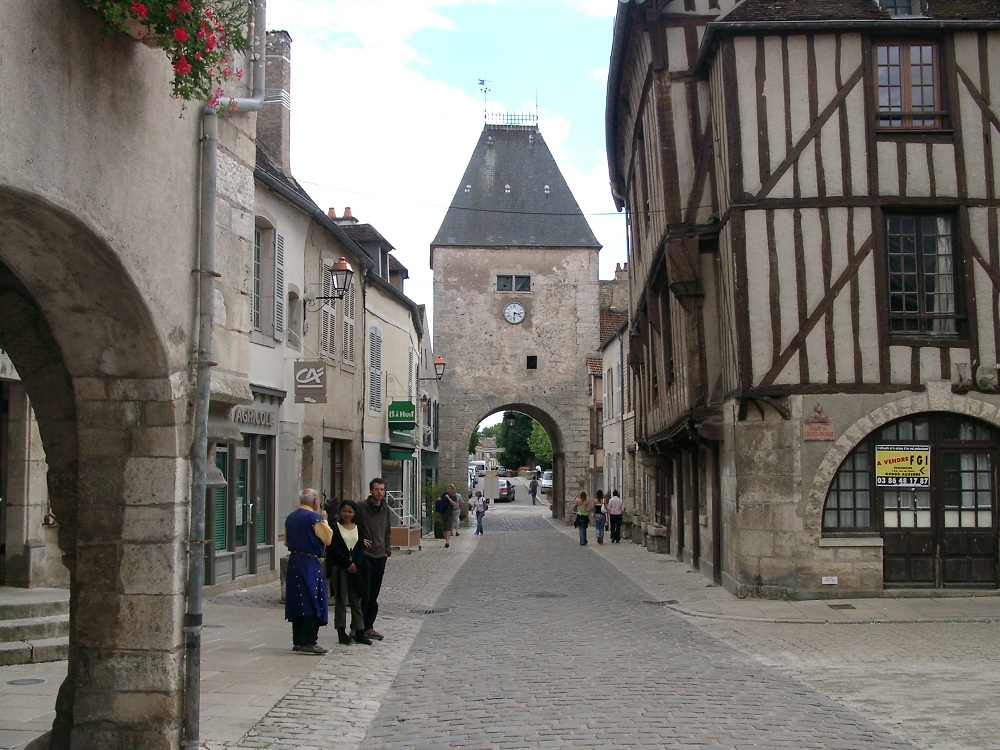In the heart of the city centre of Auxerre, backed at the Tower, a room contains the clock mechanism. The peculiarity of the clock comes from its two needles. Distinct one from the other by the Sun or the Moon planted at their ends, they give the solar and Lunar movements.
The Abbey of Saint-Germain, owned by the city of Auxerre since 1984's monument historic and, as such, accessible to the public. The monastic buildings are converted into Museum. The East Wing houses the floors the archaeological collections illustrating antique and pre-historic occupations in the Department.
In the heart of downtown of Auxerre, concealed inside a nice garden, is the former mansion of the eighteenth century bequeathed to the city by Paul White-Duvernoy. First, to perpetuate the memory of his family, then make her passion for the arts, by transforming the family home into a Museum in which are now exhibited works of art bequeathed or the municipal Collections.
The Cathedral Saint-Etienne – a rich cultural and historical heritage
Hundred years war, bag protestant of 1567 or French Revolution profoundly affected the artistic heritage of Saint-Etienne who retains no less a very variety of works of art of any kind
His large collection of stained glass from the 13th and 16th is the jewel, and murals (11th – 16th centuries), on wood (16th century) or canvas (XVII – XVIII centuries) contribute to the spiritual and cultural building influence.
Property of the Beru counties since the sixteenth century, the beautiful house dominates the vineyards of Chablis. Rare dial solar and Lunar of the fifteenth century; Gate and Tower of the 12th century; Loft of 1 500 boxes of the thirteenth.
Visits guided to 11: 00 and 16: 00 from April 15 to November 15, or else by appointment.
More information: www.chateaudeberu.com | Phone : + 33 (0) 3.86.75.90.43
Its origin seems to date back to the middle ages. It would have been served by the Hospitallers of the Holy Spirit. This Chapel, as on the hospices of Beaune, extended the room of patients who were able to attend the mass.
At the bedside of the collegiate church Saint-Martin, this building of the XVth-XVIIth centuries was property of the chapter of the canons of Tours who received "obedience" (obedience) of the canons residents in Chablis. A very old wooden said to 'slaughter', press remains.
Address: 22 rue Louis Bro, 89800 Chablis.
Built in 1160 and reconstructed from the years 1220, the Collegiate Church of St-Martin of Chablis is one of the many religious buildings influenced by the Cathedral of sense. Apart from the steeple, it has retained its original walls. Paintings from the 13th century and the horseshoes on the portal side highlight the specificity of this step on the road to Santiago de Compostela. Successive restorations have little to change its general appearance, with the exception of the Bell Tower, built in 1852, and the arrow amounts to 50 meters.
Between studs and cut stones, balusters and pinnacles carved, paved granite and limestone pavers, small streets and estates of plots, licked by the meanders of the Serein, Noyers towers the medieval wearing his title of "one of the most beautiful villages of France".
Whether day or night, down the main road of the village, we could, with very little imagination, see Knights, peasants, clerics or bourgeois and we wouldn't be surprised to see on the corner of two streets figure jovial of a yesteryear bourguignon or hear escape singing a minstrel to one of the sixteen towers lining the walls.
Rogny seven locks opens one of the doors of the Puisaye. He will lead you to the wonders what this picturesque region (ponds, castles, Site, crafts, gastronomy), and the potters of the Puisaye nine.
Village of 776 inhabitants, Rogny seven locks is one of the attractions which the Puisaye can be proud, with his curious book of which it takes its name.

